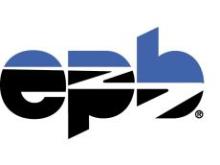Chattanooga's EPB Ranked Tops By J.D. Powers, Consumer Reports
EPB customers love the fast, affordable, reliable Internet access they get from their muni and they appreciate the way its smart-grid helps them save money on their electric bill. According to a new J.D. Power report, their municipal utility is also the highest rated mid-size utility in the South for customer service and reliability.
Double Honors
Just a month ago, Consumer Reports magazine rated EPB the best TV and Internet access utility in the county for customer satisfaction, as chosen by a reader survey. The J.D. Power report went on to rank EPB number two in the country in the category of municipal or investor-owned electric utility.
The Times Free Press reports that in 2015 EPB Fiber Optics earned a net income of $23.5 million while the electric division earned $3.5 million. EPB President David Wade said that the smart-grid has reduced power outages by 60 percent and contributed to customer satisfaction by enhancing reliability of the system.
"The lesson that utilities can learn from other high-performing service providers is that to excel you need a culture that puts customers and employees first," said John Hazen, senior director of the utility practice at J.D. Power. "And because customer expectations continue to increase, you need to have a mindset of continuous improvement to keep up."
It looks like EPB has that lesson committed to memory. From the Time Free press article:
EPB Chairman Joe Ferguson said the favorable grades from EPB customers reflect the utility's local ownership, public service and management focus on serving the customer.





